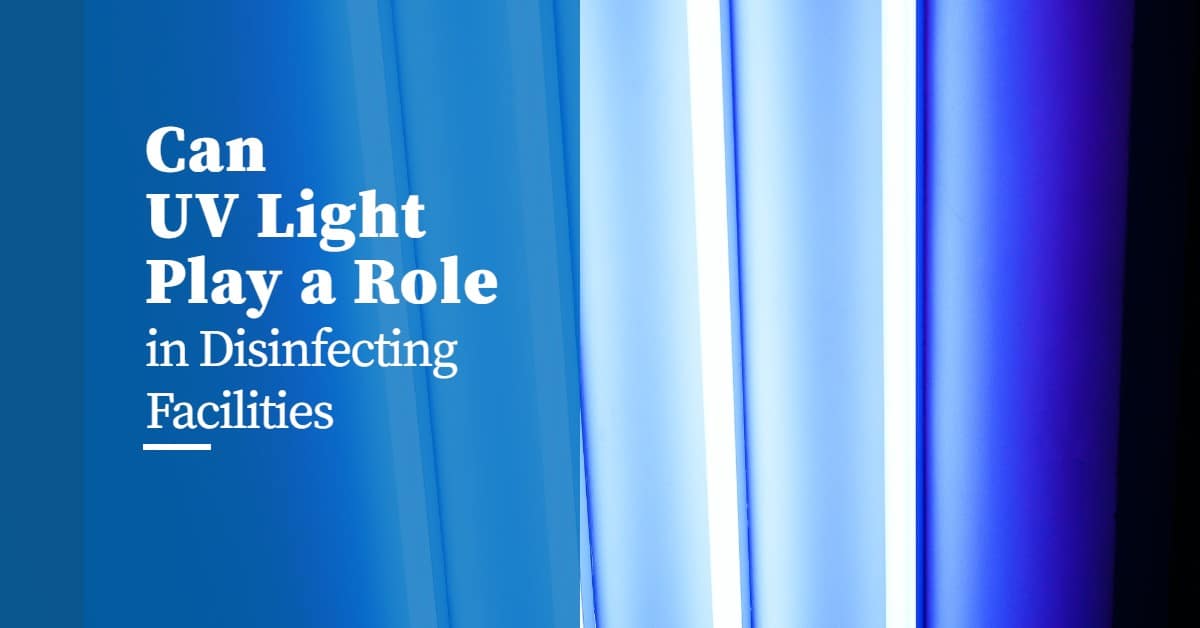
 Posted by Pam Hoddinott
Posted by Pam Hoddinott By Kristie Teoh, EIT, CSR-P, CEM
Lead Technology Engineer, Chateau Energy Solutions
As we all begin to adjust to a new normal from the pandemic, we have become more aware of disinfection and ways to prevent transmission. From social distancing to wearing masks and gloves, there are many other options to limit the spread of COVID-19. Ultraviolet germicidal irradiation (UVGI) deactivates and stops growth of pathogens, reducing transmission by 90%. Although this is not a new technology, UVGI is a promising and effective sanitization method.
The International Ultraviolet Association (IUVA) states, “UV disinfection technologies can play a role in a multiple barrier approach to reducing the transmission of the virus causing COVID-19, SARS-CoV-2, based on current disinfection data and empirical evidence. UV is a known disinfectant for air, water and surfaces that can help to mitigate the risk of acquiring an infection in contact with the COVID-19 virus when applied correctly.” In fact, UV radiant energy was first used for disinfecting surfaces in 1877, for water in 1910, and for air in 1935, according to a recent IES Committee Report.

What Is UVGI?
Let’s start with understanding what UVGI is and how it works. UVGI uses “short” ultraviolet (UV-C) light to disable harmful agents. UV-C light can be produced using low-pressure gas (mercury vapor) or pulsed xenon. To work optimally, ultraviolet wavelengths must radiate at 265 nanometers – 95% of UV energy radiates at 254 nanometers to produce 85% efficacy. Once the light is produced, it can be used in a variety of ways to disinfect. Today, we will focus on four different types of UVGI applications:
In-duct Air Disinfection
In-duct air disinfection involves mounting UV-C lights within the air ducts of HVAC equipment and sterilizing air as it flows through the system. This requires an airflow of 500 feet per minute (and 6 to 12 air changes per hour), a minimum irradiance zone of 2 feet, and minimum UV exposure of 0.25 seconds. These are important parameters since exposure time is so limited and needs high doses of UV-C light. To be effective, in-duct air disinfection must be integrated with mechanical filtration for dust control.
In-duct Surface Disinfection
Similar to in-duct air disinfection, in-duct surface disinfection entails mounting lights in HVAC units but focuses on reducing agents on surfaces of damp areas. Cleaning of these areas (cooling coils, drain pans, and plenum walls) prevents coil fouling and therefore reduction in HVAC efficiency. UV-C lights must be uniformly distributed across the surface face and about 1 to 3 feet away from the surface face while running 24/7.

Upper-air Disinfection
The most effective method of UVGI is upper-air disinfection by installing lights at least 7 feet above the floor with low UV-reflectivity of walls and ceilings. This approach includes extensive knowledge and opportunity as there is a large variety of lamp and fixture types available. When combined with forms of ventilation, large volumes of room air may be disinfected. However, when in close proximity of UV lights, personal protective equipment (PPE) must be worn.
In-room Surface Disinfection
Lastly, in-room surface disinfection is another popular method of disinfection, especially in medical care facilities. Bare lamps are utilized for minimal energy usage and maximized disinfection; this incorporates upper-air disinfection but with upward and downward movements and occupancy sensors. Because UV-C light is intensified, it is even more important to wear proper PPE. Otherwise, in-room surface disinfection must be used in unoccupied areas.
Is It Safe?
According to the IUVA, UV-C devices must be used properly to be safe. The UV-C light is stronger than normal sunlight and could cause a severe sunburn-like reaction to your skin. Furthermore, upper-air disinfection has been safely used by many to prevent airborne transmissions for the last 70 years. It is important to have knowledgeable experts install and maintain the equipment.

Who Can Benefit?
Many businesses are looking for ways to reopen or remain open safely during the pandemic. The UV disinfection equipment market is expected to grow from $2.9 billion in 2020 to $5.3 billion (USD) in 2025, according to report from research firm MarketsandMarkets UVGI solutions can work for various facility types including healthcare, long-term care facilities, hospitality, commercial, education, retail, and military. The benefits of UV Disinfection Solutions are numerous. It is safe, easy to install, and can protect employees, customers, and buildings.
About the Author:
As the Technology Lead Engineer for Chateau Energy Solutions’ Managed Services, Kristie Teoh ensures clients maintain supply and demand energy optimization and increase efficiency over time. She provides a comprehensive approach to systems management by implementing smart data analytics and insights into our clients’ operations to uncover hidden cost savings and improve energy efficiency and sustainability. Kristie has a Bachelor’s degree in Mechanical Engineering from the Georgia Institute of Technology and is currently an Engineer in Training (EIT). She is also a Certified Sustainability Practitioner (CSR-P) and a Certified Energy Manager (CEM). She can be reached at LinkedIn.
Chateau Energy Solutions Making Energy an Asset®
Ready to get started on the path to energy efficiency and sustainability?